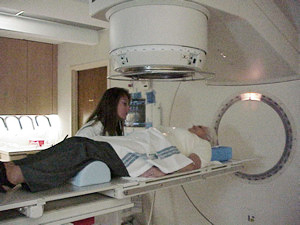
RCA News
View
| IAEA/RCA RTC on RP in Diagnostic and Interventional Radiology Safety Requirements of the Basic Safety Standards Stressed 18-22 December 2006, Bankok, Thailand | |||
|---|---|---|---|
|
Name
admin |
Date
2006.10.18 |
Views
3958 |
|

IAEA/RCA Regional Training Course on Radiation Protection in Diagnostic and Interventional Radiology will be held in Bankok, Thailand from 18-22 December 2006 in cooperation with the Government of Thailand through the Chulalongkorn University.
The background of the course is that according to the International Commission on Radiological Protection, doses from similar radiological investigations can differ by a large factor. Furthermore, there is continuing increase in the medical applications of X-rays, including high-dose procedures such as the use of radiation in interventional procedures that replace major surgery. Interventional radiology can lead to very high doses, both to patients and to medical and paramedical staff, in some cases exceeding thresholds for deterministic effects for patients. With computed tomography becoming faster and faster, it is becoming easy tool to be used in many medical examinations and there are groups advocating it as a whole body screening method, which due to the relatively high radiation doses may not be justified.
In recent years significant progress has been witnessed in developing dose reduction methodologies in diagnostic radiology without compromising on image quality. International Basic Safety Standard (BSS) requires education and training to achieve the standards of safety as laid down in the BSS.
The purpose of the course is to provide participants with specialized training on the safety requirements of the basic safety standard, as well as in organizing and implementing a radiation protection programme to comply with these requirements in the practice of diagnostic and interventional radiology. The ultimate objective is to develop national sustainable education and training system on radiation protection and safety in diagnostic and interventional radiology departments in participating Member States, and to facilitate exchange of information, experiences and cooperation, with the objective that participants become trainers in their countries. It is therefore expected that after the course, participants initiate such a training programme in respective hospitals and promote activity in their country.
It is hoped that the course shall help Member States in capacity building in radiation protection in diagnostic and interventional radiology which constitutes major part of medical exposure. It shall reduce radiation risk to patients undergoing procedures involving X rays.
For further information, contact Ms. Anchali Krisanachinda at kanchali@yahoo.com.
Attachments



